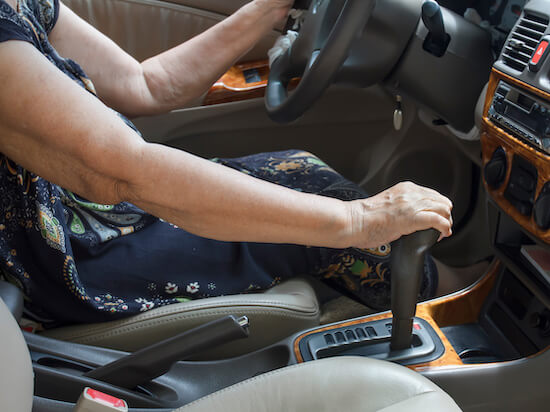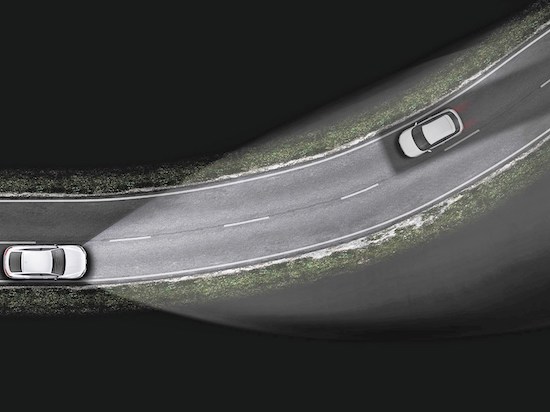In 2020, nearly 48 million licensed drivers were ages 65 and older in the U.S. According to the CDC, that’s a 68% increase since 2000. The U.S. Census Bureau data shows there are 76.4 million baby boomers (those born between 1946 and 1964), and by 2030 all of them will be 65 years old or older. In fact, since 2010 about 10,000 Americans turn 65 every day.
Use eTags© to Quickly Complete Your DMV Service. Renewals, Title Transfers and More, All Online!

Average life expectancy in U.S.? For women, it’s 81 yrs and for men it’s 77
Americans have a higher life expectancy these days, they’re more active, and drive longer. And automakers are noticing! Forward-collision warning systems, dynamic brake support, wider doors and seats, rearview backup cameras, and so much more are all making it into new cars.
Aging adults who continue to drive well into their 80s have over five times the risk of getting into a fatal accident than middle-aged drivers (Consumer Reports)
The automotive industry is adapting too!
Car companies like Audi, Toyota, and more are continuously innovating in safety features for an aging demographic since they’re most vulnerable. In 2020 alone, the CDC says there were 7,500 older adults killed in traffic crashes, and 200,000 were treated in ERs for crash injuries.
In less than eight years from now, one in five Americans will be 65 or older. And 100- year-olds will increase from 90,000 today to at least three million by 2100. The longevity of the American population has a huge impact on driving and sharing the road. A Car and Driver summer issue this year discussed how automakers are adapting and the new features they’re introducing to help keep aging drivers behind the wheel, safely and comfortably. (Below are some highlights)

Every day, about 20 older adults are in fatal car accidents and 540 are injured in crashes
In less than eight years from now, one in five Americans will be 65 or older. And 100- year-olds will increase from 90,000 today to at least three million by 2100. The longevity of the American population has a huge impact on driving and sharing the road. A Car and Driver summer issue this year discussed how automakers are adapting and the new features they’re introducing to help keep aging drivers behind the wheel, safely and comfortably. Below are some highlight.
Ford’s testing for best height-to-ground distance and step-over width
Ford, for example, works with CAD models to simulate how drivers get in and out of cars to discover the best height-to-ground distance. This testing will lead to better, more comfortable ways to step into a vehicle, especially SUVs and crossovers. Easier egress and ingress can make a huge difference for those with weaker knees, arthritis, or less mobility.

Eight out of 10 people in their 70s are arthritic, with crippling inflammation around their joints making it hard and painful to turn, twist, or flex. That’s why Ford is also exploring the best location for car controls and grab handles. For instance, the F-Series manufacturer already replaced gear shifters in the Ford Escape and the Bronco Sport with rotary dials that are more within easy reach. The Ford Mustang? Seat-mounted seatbelt straps are simpler to use for drivers who have a harder time extending their arms.
SEE ALSO: CRASHES INVOLVING SENIOR ADULTS HIGHEST IN FLORIDA
The second-largest U.S.-based automaker is also looking at reducing the overall cognitive effort needed to drive. As people age, mental sharpness progressively decreases. With that in mind, Ford Motor Company is exploring cloud-based activation and even a better spot for its steering-wheel controls. Fewer options can be less confusing too. Even the dashboard or infotainment screens can be improved, with larger buttons and displays.
General Motors has a chief engineer for accessibility; the automaker is looking into facial recognition to start the engine
Audi has lights that are like projections on the road
Audi’s digital matrix LED lights allow lane and orientation lights for a brighter road ahead. This helps nighttime driving and better visibility overall, especially for those with poor eyesight. The re-designed A8 model comes with OLED rear lights. These digital lights are activated when another driver comes within 6.6 ft. of a stationary Audi A8.

The Audi Q7 SUV was on the top 25 cars Consumer Reports list of new cars for seniors in 2018. It’s still recommended older adults behind the wheel. It’s said to have a steady ride and responsive handling. The SUV comes standard with FCW which scans the road in front of the driver to see if there are any obstacles like other cars or fixed objects. The Audi Q7 also features automatic emergency breaking (AEB) with pedestrian detection, blind spot warning, and rear cross traffic warning (RCTW).
Over 75% of aging drivers are on some medications. However, only one-third understand the effects of their medications on driving
Toyota’s Safety Sense
The automaker’s advanced product planning office created a safety package called Safety Sense. It comes standard on multiple vehicles including Prius, Corolla, Highlander, Sequoia, and Tundra. Safety Sense has lane departure alert, automatic high beams, and dynamic radar cruise control which uses a camera to adjust driving speed to maintain a preset distance. Plus, Toyota has partnerships to help educate and train older drivers on advanced driver-assistance systems. For Toyota’s luxury vehicles brand, Lexus, the safety features are even more advanced. In some of the 2022 Lexus LS models, if the vehicle detects the driver is incapacitated, the car guides itself to the highway shoulder for more safety.

When it comes to vehicle paperwork, remember that you can register and title your car, SUV, or minivan online. So if it’s harder for you to move around these days, just complete your transactions online via cellphone or computer.








